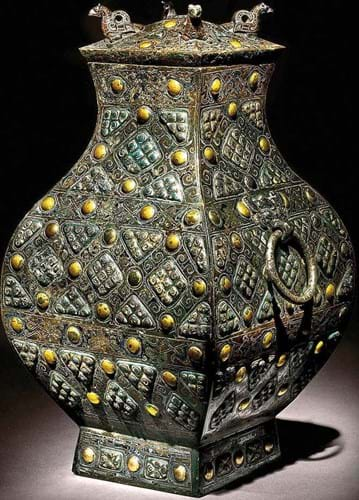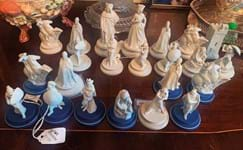
As part of an ongoing trade war with China, certain Chinese goods, including works of art, are now taxed on entry to the US, regardless of the port of origin.
Auction houses and the trade fought the planned tariffs last year and temporary exemptions were confirmed for seven of the eight art categories in July, allowing consignments for the autumn round of sales in New York to avoid this extra cost. However, this grace period ended on September 1, meaning future consignments will now be subject to a 7.5% tariff.
Peter Tompa, a Washington DC-based lawyer who previously represented US cultural bodies in opposing the levy, said: “The trade is already badly hurt by the impact of Covid-19 on its business. Tariffs only make these problems worse.”
He said further relief may be sought by the major dealers and auction houses before the tax materially impacts consignments for 2021.
A spokesperson for Christie’s said the firm “intends to continue monitoring this issue alongside industry partners in the event that exemption opportunities are renewed”.
Sotheby’s has previously declared the trade war tariff as “a material disincentive for anyone selling or buying Chinese art and antiquities in the US”.
The firm’s catalogues will now include a symbol next to impacted lots directing readers to a new clause in the terms and conditions. Importantly, this outlines that the tax will be charged against the value of the lot as declared on its entry into the US – not on the actual sale price.
Customs valuation
This customs figure (potentially quite different from the auctioneer’s estimate) will not be made public but potential buyers of imported lots are asked to get in touch prior to the sale for more information.
The tax clearly places domestic bidders at a considerable disadvantage.
Sotheby’s says that if the buyer of the lot instructs the firm to arrange shipping to a foreign address, they will not be required to pay the import tariff.
However, in the event that the buyer asks Sotheby’s to arrange shipping to a domestic address, or if the buyer collects the property in person, or chooses to arrange their own shipping (domestic or international), then the import tariff is due.
Despite the dominance of Far Eastern buyers, the US, and New York in particular, remains a key centre for the Asian art trade. It is deemed the strongest market for some Chinese collecting disciplines – particularly ancient bronzes, classic era ceramics and stone sculpture – and has continued to win important private collections for sale from both Europe and Japan.
This year’s offering at Sotheby’s includes a $2.5m- 3.5m Warring States period fang hu consigned from a European source (see below) and a series of early Buddhist gilt bronzes from a Japanese collection.
The opening 25 lots of Christie’s Important Chinese Ceramics and Works of Art sale on September 25 comprise archaic bronzes from ‘an important Asian private collection’.
The seven categories that had been subject to the temporary exemptions until September 1 were: Paintings, drawings, pastels by hand; Hand-made decorative articles; Engravings, prints, lithographs; Original sculptures, statuary; Antique silverware, age over 100 years; Antique furniture, age over 100 years and Antique art, age over 100 years.
Bronze fang hu at Sotheby’s
The lot carrying the highest expectations at this year’s Asian art series in New York is this remarkable 14in (35cm) high Warring States period (475-221BC) bronze sacrificial wine vessel or fang hu, shown above.
Imported to the Big Apple from continental Europe before the tax on Chinese works of art was applied, it carries an estimate of $2.5m-3.5m.
One of only three other pieces that share the opulent inlays of gold, silver and patterned glass beads, it comes for sale at Sotheby’s New York on September 23 by descent from Adolphe Stoclet (1871-1949), the Belgian industrialist best known today as a key patron of Josef Hoffman (1870-1956).
The piece, visible in a photograph of Stoclet Palace taken in 1917, was one of 28 Chinese works of art lent by Stoclet to the seminal International Exhibition of Chinese Art at Burlington House in 1935.
See Asian art previews in this issue.















